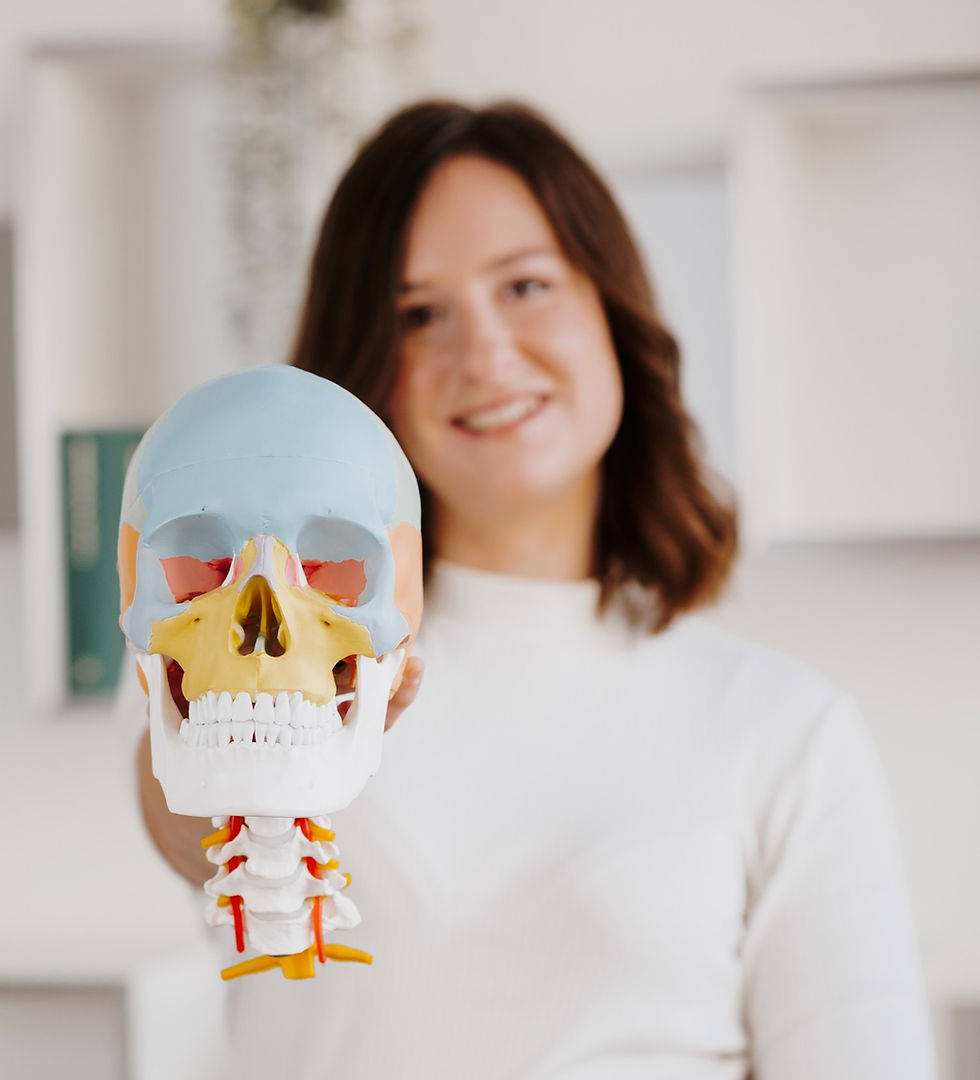Back pain caused by the intestines
- Mariella Koch
- Oct 18, 2023
- 3 min read
Why do osteopaths often treat the abdominal organs to alleviate back pain? What does my breathing have to do with the spine? And why do people often have back pain when they have diarrhoea?
Many people ask themselves these or similar questions when they go to an osteopath for the first time.
In this article I would like to address some of these questions.
The human body is very complex and many structures are connected to each other and interact with one another. A simple example: Every muscle has an origin and an insertion, i.e. a beginning and an end. For example, in order for the muscle to bend my knee, the muscle must start above the back of my knee and be tightened below the back of my knee. If the muscle contracts when tensed, the knee bends.
The interaction of these muscles is very important for function. If I want to bend my knee, the muscles that carry out this movement have to tense up and at the same time let the muscles on the opposite side (in this case the knee extensors) relax, otherwise there will be no movement.
This means that local injuries can cause dysfunction and pain. But our body consists of so much more than muscles and joints. So let's go to the question from before: What does the abdominal organs have to do with the back?
Most abdominal organs are located in the so-called peritoneum. This peritoneum is like a kind of sac that holds the organs in place and anchors them in the body. Imagine if you were jumping on a trampoline and all the organs in that sac in your abdomen would fly up only to land hard again in the pelvis - not a very pleasant idea, right?
And that's exactly the point: the organs in the big sac have to be fixed somewhere so exactly that, doesn't happen. The small intestine, for example, is attached to the peritoneum and the diaphragm with thick ligaments (Toldt's fascia and Treitz's fascia). In addition, the small intestine is supplied with nervous, lymphatic, arterial and venous supplies via the so-called mesentery. This mesentery is in turn anchored to the lumbar spine via the so-called Radix mesenterii. It now becomes clear why intestinal problems can lead to pain and tension in the lumbar spine due to anchoring.
In addition, the peritoneum also has a close connection to the spine and can therefore radiate into the back in the event of inflammation and restrictions.
And why does my breathing affect my back? Strictly speaking, the diaphragm is a muscle that tenses when you breathe in, thereby lowering it, and relaxes and rises again when you breathe out. In order for it to do this, it needs an origin and an insertion - as you already learned above using the example of knee flexion. And now guess where the diaphragm is attached to? Exactly, on the spine (more precisely on the vertebral bodies of the lumbar spine), on the ribs and on the sternum.
Now you probably understand why, for example, the small intestine and its good mobility in the abdominal cavity plays an important role, as does a well-functioning diaphragm.
However, there is something else to consider: every organ is supplied by nerves. These nerves ensure that the organ can fulfil its respective tasks and control the organs. All of these nerves come from the spinal cord, which run through the spinal canal in the spine. Think of it like cords that have fibres running from a thick rope to each organ and back again. Now what happens when you pull on a fibre?
If you pull hard enough, the tension will extend into your thick rope, your spinal cord in your spine. This is also one way in which back pain can occur, but it is originally triggered by an organ. Of course it can also be the other way around: the nerve then sends “wrong” signals. Signals, for example in the case of herniated discs or inflammation of the vertebral joints, which lead to the organ's function being disrupted.
So let's summarise:
The body is very complex and the individual systems (organs, muscles, joints, etc.) affect each other.
The small intestine is connected to the radix and various ligaments connected to the diaphragm and spine. If one of these structures has a disorder, these can affect each other.
The nervous system also plays an important role in the development of back pain: the so-called spinal nerves, which not only supply muscles and skin areas, but also supply organs. Through this connection, organ disorders and restrictions in organ function can also affect back problems and vice versa.
I hope you enjoyed reading the blog article “Back pain through the intestines” and you were able to learn something new! If you have any questions, please contact PHEOS München!





Comments